The magic on stage is created not only by talented actors but also by well-executed lighting. In this guide, we will explore the use of stage lighting and how it can affect the mood and safety on stage. We will also cover the technologies behind lighting design, as well as budget considerations for professional theaters and amateur theater groups.
Read on to learn more about how you can use stage lighting to take your performance to the next level! ⤵️
What is stage light? 🤔
Stage lighting is an important part of the theater world. It's used to create the right atmosphere on stage and highlight the key elements of the piece. By using different colors, intensities, and energies, both dramatic effects and subtle details can be achieved on stage. Stage lighting helps immerse the audience in the story and creates the magic on stage.
The functions of stage lighting are numerous, from marking the beginning and end of scenes, transitioning between them, or supporting specific emotions or atmospheres. Light also significantly contributes to the characters' expressions and conveys their emotional reactions to the course of the action. At the same time, the lighting should be carefully planned in collaboration between the director, stage, and lighting designer for optimal effectiveness without distraction.
Definition
Stage lighting is crucial for achieving the desired effect on stage. It can be defined as the artistic use of light to illuminate or highlight a scene or object. The energy of the light can also contribute to creating drama and mood on stage, depending on how it's used.
Stage lighting is crucial for creating drama and mood on stage, and it has evolved into an art form in itself with specially designed lighting for each scene and character.
In the world of theater, stage lighting is important for bringing the audience into the story and giving them the feeling of being part of the action. Historically, stage lighting was primarily used for practical purposes such as illuminating the actors, but it has evolved into an art form with different colors and intensities specifically designed for each scene and character. Stage crew pay great attention to the placement of various light sources as well as setups on the stage for maximum performance.
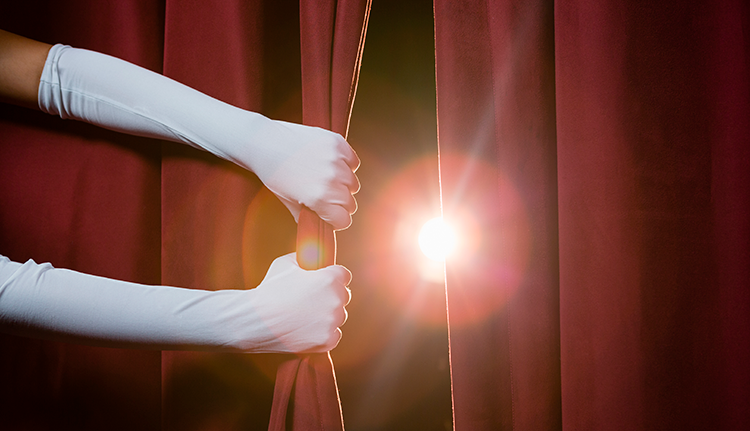 |
Functions ⚙️
The types of stage lighting and their functions can vary in terms of energy consumption and lighting ability.
Spotlights are good at highlighting individual actors or objects.
Wash-lights spread light over a larger part of the stage.
LED-lamper have the advantage of using less energy than traditional lamps.
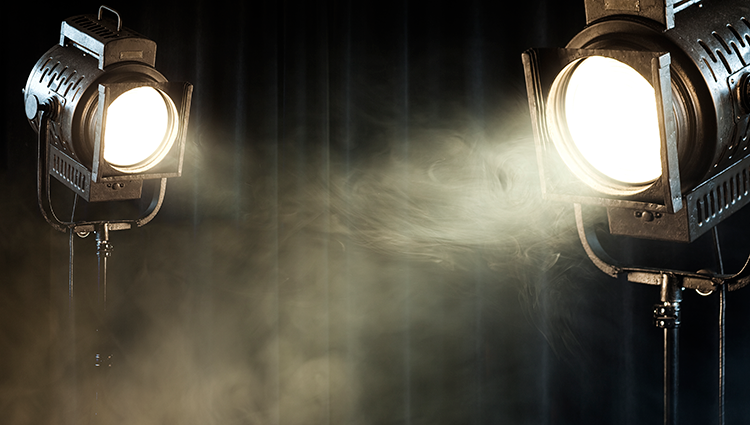 |
Blending colors is essential for creating different effects on stage. With RGB lamps, colors like red, green, and blue can be blended to achieve a wide spectrum of shades. Additionally, the light can be dimmed or intensified as needed.
Moreover, having the correct placement and direction of light sources is important to avoid shadows or uneven lighting on stage. It requires experience and practice, but a good rule of thumb is always to test the light from the audience's perspective - this way, you achieve the best result as seen from the auditorium.
Stage light and atmosphere 😯
Choose colors based on the tone of the play. The color selection on stage can have a significant impact on the audience's experience of the play, so it's important to consider the tone and mood of the plot. If the play has a dark and gloomy undertone, it may be appropriate to use grayish and bluish hues in the lighting.
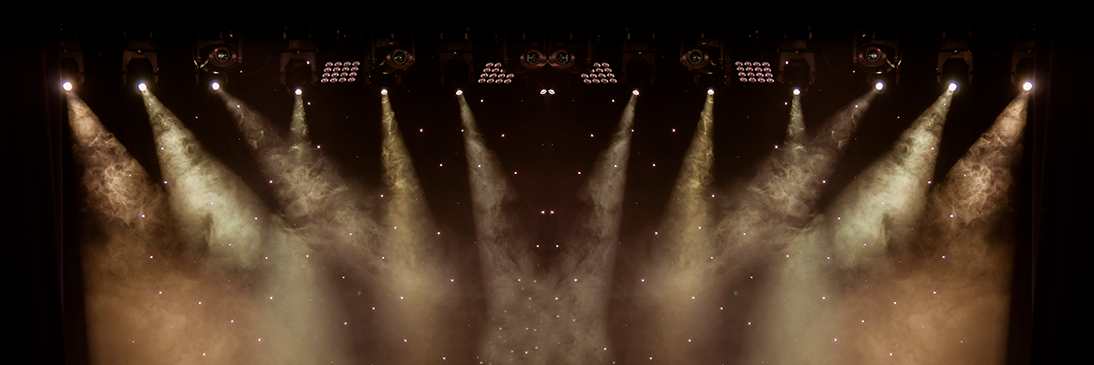 |
Ensure that the color selection supports the actors' performances. It's not just the plot that should be supported by the lighting design - the actors' performances should also be taken into consideration. For instance, warm yellow lighting can highlight a smile or another positive emotion portrayed by the actors.
Additionally, use contrasting colors to create dynamism. When choosing colors for stage lighting, it's important to consider the significance of contrast for the eye. By incorporating contrasting colors such as red and green or blue and orange, you can bring the set to life and create excitement between the different elements on stage.
Teknology and stage lights 🕹️
are two concepts that go hand in hand on a modern stage. With LED lighting, a wide range of colors and effects can be achieved to create the desired atmosphere on stage. Additionally, intelligent lighting allows for dynamic control of the light in real-time, constantly adapting to the plot's actions and mood.
The stage itself also plays an important role in the technology behind stage lighting. The various heights and levels make it possible to create space and depth on stage using lighting. Overall, the technology behind stage lighting provides stage technicians and actors with countless opportunities to create magic on stage, with light as a central element.
LED-lights
Stage lighting is a crucial factor in creating the right atmosphere on stage. With LED lighting, it's easy to control colors and intensity, allowing for the customization of light to fit the specific scene or situation. The stage can also be used in conjunction with LED lighting to achieve more complex effects and create a magical atmosphere on stage.
Intelligent lighting is another way to take your lighting to the next level. By using devices like DMX units, you can control various lighting settings that perfectly suit your needs and creative vision. Intelligent lighting also enables you to fully integrate sound, music, and other elements into your show for a more cohesive result.
Intelligent lighting
Intelligent lighting can indeed be a game-changer for stage lighting. With the use of advanced technology, lighting can now be tailored to the specific needs of the stage and create the desired mood instantly. This means that theater professionals and amateur theater groups no longer need to search for the perfect spotlight or background lighting - intelligent lighting does the job for them by responding to changes in sound, movement, and color.
When should you change stage lights? 🚥
As theater professionals or amateur theater enthusiasts, it can be a challenge to know when to change stage lighting. Stage lighting is essential for creating the right atmosphere on stage and can have a significant impact on the audience's experience of the performance. But how do you know when it's time to change the lights?
First and foremost, it's important to have a general plan for when to change the lights during a performance. This may vary depending on the play and the different scenes, but a good rule of thumb is to consider the time of day and the various actions taking place on stage.
When it comes to the actual lighting, there can be several factors that influence when to change it. Here are some of the most common:
Scene changes or plot development: If there's a change in the plot or scene, it may be necessary to adjust the lighting to create the desired mood. This could involve changes in colors or light intensity to emphasize a particular feeling or atmosphere.
Actors' positions: If the actors move on stage, it may be necessary to adjust the lighting to ensure they remain properly illuminated and visible to the audience.
Audience perspective: It's also important to consider the audience's perspective and ensure they can see the scene and actors properly. This may require adjustments to the light sources to avoid glare or shadows on stage.
Time of day: If the performance spans several hours or days, it may be necessary to adjust the lighting to account for changes in natural light from outside.
Lighting requirements: Finally, it may be necessary to change the stage lighting to meet specific lighting needs, such as creating a particular mood or highlighting specific elements on stage.
To ensure a professional and cohesive performance, it's important to have a plan for when to change the stage lighting. This can be done by considering the factors that affect the lighting and planning accordingly.
How do you create the right atmosphere with stage lighting?
Stage lighting is an essential part of any theatrical performance. It helps set the right mood on stage and can have a significant impact on the audience's experience of the show. But how do you create the right atmosphere with stage lighting?
First and foremost, it's important to have a good plan for the mood you want to create in different scenes and actions. This can be done by considering the play's genre, the characters' emotions, and the development of the plot.
Next, you can choose the right colors and light intensities to emphasize the desired mood. Here are some examples of how different colors and light intensities can create different atmospheres:
🔴 Red: Red is a color that can be used to create intensity and passion on stage. It can be a good color to use in scenes with conflict or drama, where the characters are emotional and angry.
🔵 Blue: Blue is a color that can be used to create calm and peace on stage. It can be a good color to use in scenes with quieter and more contemplative characters or scenes where a relaxing atmosphere is needed.
🟢 Green: Green is a color that can be used to create a sense of nature and freshness on stage. It can be a good color to use in scenes with outdoor settings or scenes where you want to create a sense of calm and balance.
🟡 Yellow: Yellow is a color that can be used to create happiness and optimism on stage. It can be a good color to use in scenes with celebrations or festivities or in scenes where the characters are joyful and full of energy.
By choosing the right colors and light intensities, you can create the desired atmosphere on stage. However, it's also important to remember that different scenes may require different lighting settings, so planning accordingly is key.
Use stage lighting in the right way - tips and tricks
1. Planning ⏱️
As mentioned earlier, it's important to plan according to the different scenes and desired moods. Take the time to consider which colors and light intensities are well-suited for each scene to create the desired effect.
2. Test it beforehand 🧪
Once you've planned your lighting, it's crucial to test it beforehand. Take the time to try out different settings and adjust them until you're satisfied with the result. Also, consider the audience's perspective and ensure that stage props do not obstruct their view of the actors.
3. Use different light sources 💡
Using different light sources can also help create the desired mood on stage. For example, you can use LED lights, spotlights, or gobos to utilize different colors and effects for your lighting. It's important to consider the amount of light available and how it will affect the mood on stage.
4. Be mindful of the actors' needs 👯
Stage lighting can help highlight the actors' performances on stage, but it's also important to consider their needs. Ensure that the light is not too harsh or blinding and does not obstruct their field of vision.
5. Create depth and perspective ↔️
By using different light angles and intensities, you can create depth and perspective on stage. It can help highlight different objects or actors on stage and create a more realistic backdrop.
6. Be creative 🎭
Stage lighting can also help create a unique and creative atmosphere on stage. Don't be afraid to experiment and try new things. For example, you can use light to create visual effects such as rain or fog, or to highlight specific elements in the set design.
7. Try different colors 🎨
Colors can help create a particular mood on stage. For example, red light can signal the dangers of a scene, while blue light can create a more calming atmosphere. Try out different colors and see how they affect the mood on stage.
8. Consider transitions 🔀
Transitions between scenes can also help create a special atmosphere on stage. For example, you can use light to create a gradual transition from one scene to another or to mark the transition with a significant change in light.
9. Focus on details 👀
It's also important to focus on the small details when working with stage lighting. Ensure that everything is clean and tidy, and that stage props are placed in a way that does not disturb the audience's view. Also, consider how the light will affect the props and costumes on stage.
10. Collaborate with the rest of the theater team 🏆
Finally, remember that theater is a team effort. Work closely with the rest of the theater team, including the director, set designer, and sound designer, to ensure that the lighting and stage props support the overall production.
Ultimately, the use of stage lighting can make the difference between an average performance and one that truly impresses the audience. By considering the above tips and experimenting with different light sources, colors, and transitions, you can help create an unforgettable theater experience for both actors and audience.
Stage lights and safety 🛟
Stage lighting is an important factor in creating the right atmosphere on stage. However, it's also crucial to prioritize safety, both for the audience and for the actors/technicians. Always ensure proper cable management and marking of stage props, as well as correct lighting of emergency exits and fire alarms. A little extra time spent on safety measures can save lives in case of an emergency.
When working with stage lighting, make sure to have the right tools and equipment available. Pay attention to power sources. If any issues arise during rehearsals or the performance, be prepared to take action quickly using your planned emergency procedure - so that everyone involved can receive assistance as soon as possible.
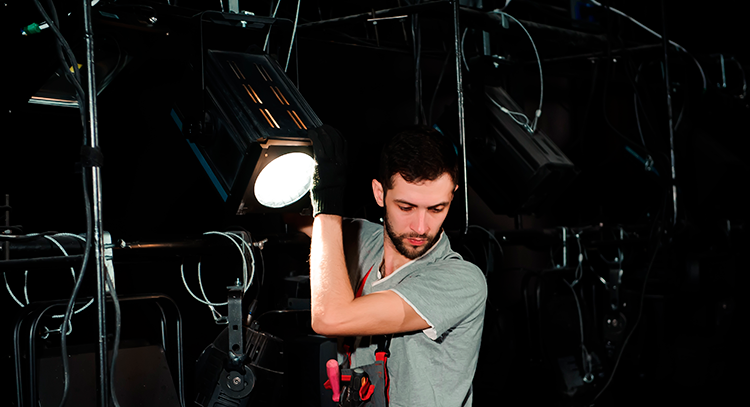 |
Safety for the audience
Correct placement of lighting fixtures is important to ensure audience safety during theatrical performances. Properly placed lighting fixtures help prevent audience members from being blinded, allowing them to follow the action on stage without difficulty.
It's also crucial to use safe cables and connectors for stage lighting, as this will minimize the risk of fire or electrical faults. Adherence to fire and safety regulations should always be a top priority when working with stage lighting. Additionally, regular inspections of equipment and installations should be conducted, and a plan should be in place for emergency situations.
In summary:
- Correct placement of lighting fixtures
- Use of safe cables and connectors
- Adherence to fire and safety regulations
Safety for the actors and the technicians
Training in the correct use of lighting equipment is essential to ensure the safety of both actors and technicians on stage. Through training, potentially dangerous situations where mishandling of the equipment could lead to injuries or even fire hazards can be avoided. Therefore, it's important that all involved have the necessary knowledge and experience with the work.
Before setting up the stage, a thorough risk analysis should be conducted to avoid potential hazards. This includes evaluating the stage props as well as the placement of lighting fixtures and cables on the stage floor. This way, potential risks can be identified and eliminated before the start of the performance.
Another factor in ensuring the well-being of actors and technicians is focusing on ergonomically correct working positions throughout the process. By taking into account the body's natural movements when operating or adjusting the equipment, the risk of strain-related injuries such as muscle or back pain among the personnel behind the stage lights is minimized.
Stagelighting and budgets 📊
These are two unavoidable factors when it comes to theater productions. It's important to consider stage lighting right from the beginning of the planning phase so that necessary costs can be factored into the budget. Some ways to save money can include using LED lights or recycling existing lighting equipment.
Investing in good stage lighting is also crucial for creating the right atmosphere on stage. The right lighting can enhance audience engagement and intensify the overall experience for both actors and audience. With a well-executed lighting design, you can truly make magic happen on stage, so it's worth investing in quality lighting even if it may cost a little extra.
How you can save money 💸
Buying used lighting equipment, renting lighting equipment instead of buying it, and investing only in the necessary equipment are some ways to save money on stage lighting without compromising quality.
Here are some ways to save money on stage lighting without compromising quality:
1. Look for used lamps, cables, and stands from local theater groups or online marketplaces.
2. Consider renting instead of buying equipment for smaller tasks or rehearsals.
3. Invest only in the necessary parts of stage lighting, such as powerful lamps, rather than expensive decorative effects.
All of these can help you make the most of your budget while still creating a magical atmosphere on stage through professional lighting design.
Why investing in good lighting equipment is important ⚡
Improves the aesthetics and atmosphere of the performance
Good stage lighting is a crucial factor in creating the right atmosphere on stage. It can completely alter the feel of the presentation and make it more engaging for the audience. By investing in good lighting, you can achieve a professional appearance that will convince the audience they are witnessing a high-quality show.
Highlights the actors' performances
Just as good makeup and costumes can enhance an actor's performance, good lighting allows for highlighting their facial expressions and gestures. This helps convey the emotions of the play more effectively to the audience.
Provides creative freedom and flexibility
Investing in a comprehensive lighting package also means more choices when it comes to designing the light show - from different color tones, levels of intensity, or spotlights directed at specific scenes or individuals on stage. This gives theater professionals greater creative freedom during production and increased flexibility during shows if something goes wrong with the originally planned lighting.
Enables a better performance experience Breaks up staged groupings between actors Channels the drama experience
Remember: Good lighting is the finishing touch and can make a huge difference. Explore our selection of stage lighting for theater and concerts here.
We wish you a wonderful experience with your performances!



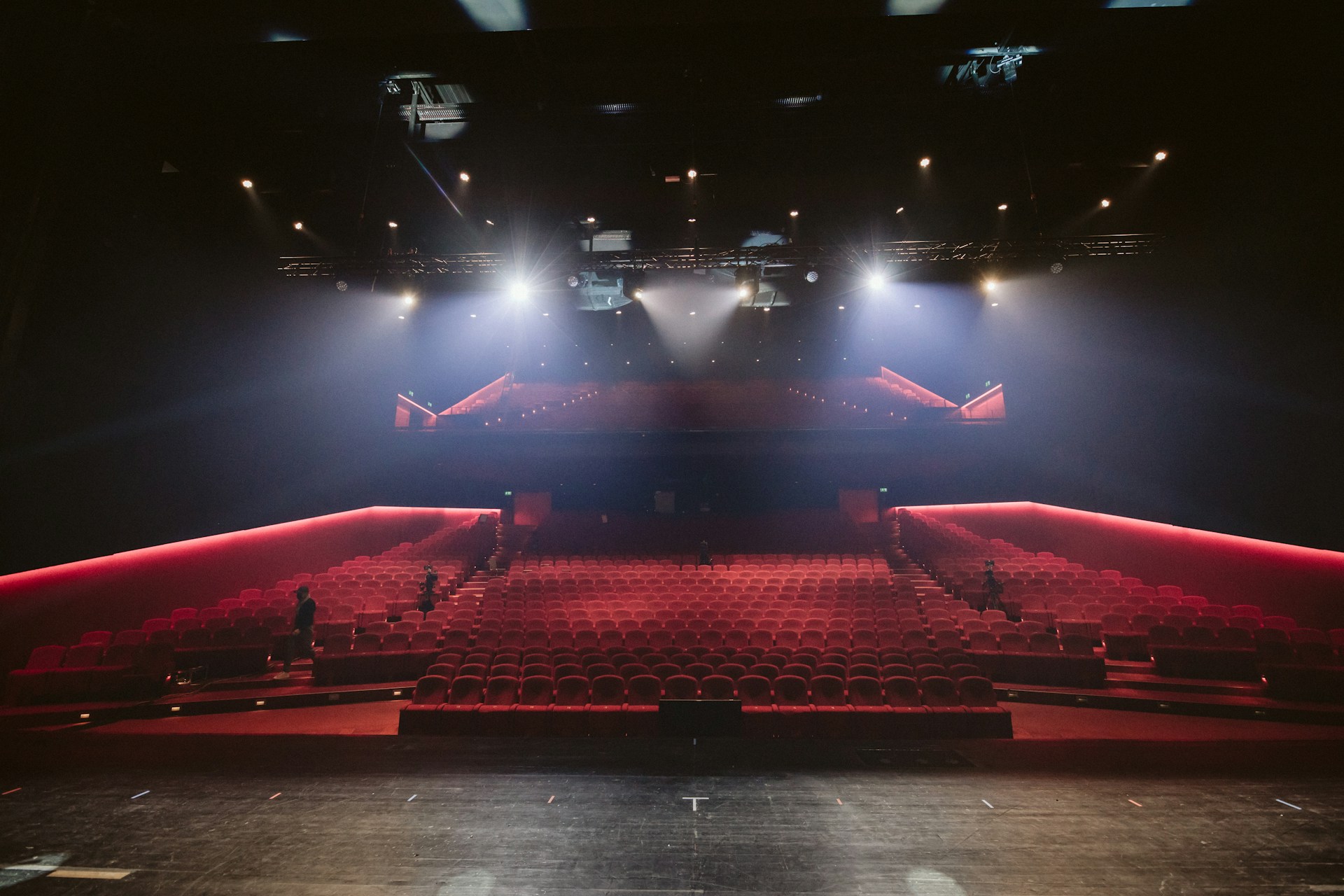

→ Back to our Information Center ←
Terms and conditions for private clients
Click here to see our terms and conditions for business clients
Music Group Denmark A/S and this e-commerce shop will be referred to as "seller, us, we, our, the webshop", while the client purchasing a product from Music Group Denmark A/S will be referred to as "buyer, client, customer, you, your, yours”.
Address:
Music Group Denmark A/S
Norddigesvej 4
DK-8240 Risskov
DENMARK
info@soundstorexl.com
Tel. +45 70273041
Private company
VAT: DK-33777175
Year of establishment: 2011
Delivery
The delivery costs depend on the size and weight of the order as well as the address and country of its destination. Please visit our Information Center for an updated country-specific price list. We reserve the right to charge the actual shipping price in case of goods exceeding the carriers' standard size and weight restrictions. We will inform the customer about this before the order is completed.
You have the option to enter an alternate shipping address, e.g. your workplace, when placing the order.
The sender of the package will be our logistics provider Online Distribution.
Please note:
When you order goods for private delivery, the order can be delivered by one or more carriers due to the fact that our suppliers use different freight companies. Packages will be handled according to the company’s method of conveyance.
You can find a list of our carriers in our Information Center. If you would like to know who will be delivering your order, in most cases you can find the information on Your Account. If this is not stated, please feel free to contact us.
Payment
In our e-commerce store you can pay with the following means of payment:
Credit cards
MasterCard
MasterCard Debit
Maestro
Visa
Visa Electron
The amount will not be drawn until we ship your order and we cannot draw a larger sum than the one you approved at the time of purchase.
Bank transfer
Please transfer the total order amount (including the delivery fee) to our bank Spar Nord Bank A/S:
BIC/Swift code: SPNODK22
IBAN: DK2290041120451932
We will charge no fees for banktransfers.
Gift certificate
Please note that you can only use one gift certificate per order.
For information on other country-specific means of payment, please click here.
When we have received the payment, we will ship your order immediately.
Prices
We reserve the right to cancel an order due to incorrect pricing in our e-commerce store (this might occur due to automatically calculated prices). The automatically generated confirmation, you will receive upon placing your order, is thus simply a copy of the online shopping cart - not our final order confirmation.
It is possible for you to view your previous orders in our online shop (starting from when you created a login with us). After logging on you can print your invoices etc.
Please note that both Danish and international private clients will be charged VAT according to Danish legislation.
Terms and conditions for discount codes and gift certificates
Unless stated otherwise, the following terms apply to the use of discount codes when placing a regular order (not applicable to individually prepared offers).
1. A discount code can only be used once per customer per day.
2. You cannot use more than one discount code per order.
A gift certificate is considered a deposit, not a product purchase. A gift certificate cannot be used as payment for a new one.
Right of return/cancellation
When shopping with us, you have 30 days right of cancellation. It expires 30 days after you:
When returning a product to us, please download our return form, fill it in and include it in the package.
Please note that some goods cannot be returned as normal cargo due to their size (this usually applies to goods over 30 kg or 2 meters in length).
You cannot cancel an order just by refusing to accept delivery without specifically letting us know.
Goods not included in the right of return/cancellation
We do not accept the return of demos and goods that have been made or ordered specifically for you (e.g. items that have been shortened according to your instructions or custom-made items). Furthermore, we do not accept the return of certain product categories, as it is impossible to assess the extent to which they have been used: pickups, pickup needles, bulbs, liquids, paint etc.
Return policy
Please use this return address:
Music Group Denmark A/S
Norddigesvej 4, Gate 6
DK-8240 Risskov
DENMARK
Please note that it is not possible to send us the goods COD.
We only accept products returned in their original packaging and only if the included software is not enabled. This means that when we receive the returned products, they must always be in minimum the same condition as when we shipped them. Therefore we kindly ask you to make sure that the item is properly wrapped. Since you are responsible for the goods until we receive them, we encourage you to keep your track and trace number from the carrier.
Please include a copy of the order confirmation or other documentation for your purchase when returning the item to us.
Please note that you are responsible for covering the shipping costs when returning a product to us.
In cases where the right of cancellation is used, we refund your purchasing price plus the delivery costs (if you had any when the goods were delivered to you) as soon as possible (and no later than 30 days from the day we received notification of your decision to cancel the order).
Please note regarding returned goods:
We always check goods returned to us, and you might lose your payment in part or in full. This happens if a product has been damaged or its value has been reduced. Among other things this could be the case for one of the following reasons:
Refund:
We make the refund with the same means of payment that you used for the original transaction unless we have explicitly agreed otherwise. If you paid with credit card, we will transfer the money back to the same card.
We can withhold the payment until we have received the returned item from you (unless you have submitted documentation for returning it). We refund the amount that you paid for the goods as soon as possible (and no later than 30 days from the day we received notification of your decision to cancel the order).
Read more about the cancellation of orders paid with MasterCard and Visa Card.
If the product is faulty (right of complaint)
When you shop in our e-commerce store you are protected by Danish legislation offering a high level of consumer protection. You have 12 months warranty and 12 months right of complaint which allows you to submit a complaint about errors or omissions that existed when the item was sold.
We do not provide support or warranty on free software (e.g. a trial or limited edition). The manufacturer provides the software support.
It is a requirement that the complaint is justified and that the defect has not arisen as a result of an incorrect use of the product or other damaging behaviour.
Please have a look at our Information Center for answers to frequently asked questions regarding this.
You are also very welcome to contact us. Depending on the specific situation we can tell you where the burden of proof lies, if the goods can be repaired or exchanged or if a discount can be an option.
Repair
If an error occurs with a product within the warranty period (12 months warranty from date of purchase + 12 months right of complaint), please contact us with a detailed description of the issue. Then we can arrange the details of the repair before you ship it.
Sending the product for repair consists of the following steps:
Fill in our online RMA form (repair form) to help us minimize the turnaround time.
Send it to us.
Await our answer regarding repair.
Send the product according to our instructions. We might ask you to send the product directly to the manufacturer to shorten the expedition time. Please note that it is not possible to send the goods COD.
When sending the package you MUST enclose:
An address to which we can return the product after repair
A list of the equipment included in the package, e.g. power supply
A copy of the original invoice (can be found in your customer account)
We will then get back to you as soon as possible.
Repair terms and conditions
The product must be sent securely wrapped, at best in its original box.
In case the stated error cannot be observed, or if the error has been caused by another product, an inspection fee of €55 including VAT is charged by invoice. The amount must be paid before the product can be returned to you.
Please note that you are responsible for covering the shipping costs when sending a product for repair. We pay the costs when returning the product to you after repair (only for private clients and only if the repair is covered by the warranty or right of complaint).
Personal Data Protection Policy
In order for you to enter into an agreement with our e-commerce store, we need the following information:
We solely register this personal information in our system for the purpose of processing your order.
No personal information recorded on our webshops will ever be transferred, sold or made available to third parties. All information is stored in a secure manner and is only available to our trusted employees.
Our e-commerce store has a highly encrypted and secure system for online payments to guarantee your safety when shopping with us.
The webshop system uses so-called cookies to manage the content of your shopping cart. In short, a cookie is the name of a file stored on the buyer's computer. We use these cookies to recognize customers and, for instance, remember what items are in the shopping cart when you shop with us. It is also possible for you to ask the system to store your contact details for your next visit. If you ever want to erase the information stored via cookies, this can be done in the browser settings. In Internet Explorer, for instance, please go to the "Tools" menu and then choose "Internet Options".
In addition, we register the IP address from which the purchase is made. This information is normally not used, but can be used in the case of a police investigation. The IP address is stored as long as necessary in relation to the police investigation. All fraudulent orders will be reported to the police!
According to Danish legislation the personal data are registered with Music Group Denmark and stored for five years after which the information is deleted.
When collecting personal information through our website, it is always done with your preceding consent. In that way you always know which information we have and why.
Our managing director and customer service employees have access to the information that is registered about you. The managing director of Music Group Denmark, Palle Bertelsen, is our systems manager.
When you are registered with Music Group Denmark A/S, you are always entitled to object to the registration. According to Danish legislation you also have the right to insight in the information we have on you. Please contact Music Group Denmark on info@soundstorexl.com regarding this matter.
Log entry
We use log statistics on our e-commerce store, which means that our system collects information that can give us statistics on e.g. the number of visitors, where they come from and where on our shop they drop out. Log statistics are used only for the purpose of optimizing our online shop.
You can choose to have your email address included on our mailing list. After registering you will regularly receive news and other information regarding our e-commerce stores. You may subscribe or unsubscribe this service at any time.
When you are registered with Music Group Denmark A/S, you are always entitled to object to the registration. According to Danish legislation you also have the right to insight in the information we have on you. Please contact Music Group Denmark regarding this matter:
Music Group Denmark A/S
Norddigesvej 4
DK-8240 Risskov
DENMARK
VAT: DK-33777175
Tel.: +45 7027 3041
info@soundstorexl.com
Complaints
If you want to complain of your purchase, please contact our customer service at info@soundstorexl.com or telephone +45 70273041.
→ Back to our Information Center ←